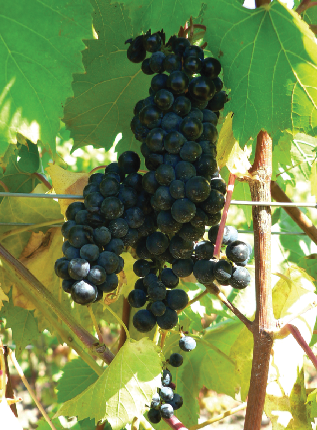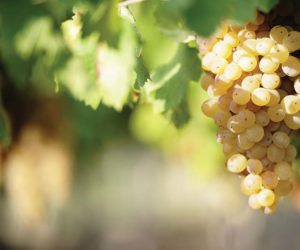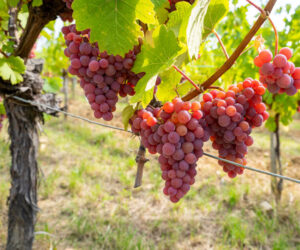 Ferdinand Foch is not exactly a household name in North America, but in France, he was a hero. He was born in 1851, and at an early age he had desires to join the French army. He studied history, notably, the Napoleonic Wars, and at the age of 20 joined the French Army and fought in the Franco-Prussian War. After the War, he enrolled in the École de Guerre, or the French Army College. He then went on to teach and eventually became the director of the institute.
Ferdinand Foch is not exactly a household name in North America, but in France, he was a hero. He was born in 1851, and at an early age he had desires to join the French army. He studied history, notably, the Napoleonic Wars, and at the age of 20 joined the French Army and fought in the Franco-Prussian War. After the War, he enrolled in the École de Guerre, or the French Army College. He then went on to teach and eventually became the director of the institute.
When the First World War broke out, Foch was given command of the Ninth Army and oversaw the Battle of the Marne amongst others. He fell into some disgrace after questionable decisions by the higher command and was then banished to the Italian front, only to be recalled to France to end out the war on a high note, as Allied Supreme Commander. Playing a decisive role in saving Paris from German advances, Foch was later promoted to Marshal of France. When he died in 1929 in Paris, his accomplishments and heroism awarded him the honor of being buried in the Hôtel National des Invalides, the final resting place of other notable French heroes including Napoleon Bonaparte.
So what does this have to do with this issue’s “Varietal Focus”? Ferdinand Foch’s accomplishments in life really had nothing to do with grapes, or grape breeding (but as a Frenchman, I am sure he enjoyed a good glass of wine or two). According to the Iowa State University Extension, the only connection Field Marshal Foch has to the interspecific hybrid Marechal Foch is that in a burst of patriotic fervor after the war, the French grape scientist Eugene Kuhlmann (1858-1932) bred the new variety and named it after the aging general. Kuhlmann is not exactly a French name, rather it is Germanic in origin, but he was known in the French region of Alsace for his grape breeding efforts. Keep in mind, this area on the Rhine River, between France and Germany, has for centuries been in dispute. After the Great War, the region was in French control.
Foch, as it is sometimes called, is a red grape. The berries are small compared to other hybrids. Yields in a range of 3-8 tons per acre are reported, and the French Ampelographer Pierre Galet says that pruning the spurs longer improves typical yields. It is considered one of the hardiest of the thousands of French-American hybrids. It was first developed in 1920, and was brought to the United States in 1951. It is also known as Kuhlmann 188.2, and its pedigree is thought to be that of 101-14 Mgt x Goldriesling, although the Iowa State Extension also lists Oberlin 595 x Pinot Noir as a possibility. Ober-lin 595 is a Gamay-based French-American hybrid developed by Kuhl-mann’s father-in-law.
Of the more common grapevine diseases, Foch is highly susceptible to Eutypa dieback, and moderately susceptible to powdery mildew and Botrytis. It can also be injured by sulfur applications used to treat these conditions. It is reported not to be affected by copper applications.
The variety is tolerant to cold winter temperatures, making it one of the more common varieties in the Midwest states of Minnesota, Iowa, Wisconsin, and Illinois. The grape growing regions of the lower third of the state of Minnesota are better suited for Foch. Specific tolerances to short exposures down to -20 °F (-29 °C) have been documented.
It is reported that many cold-tolerant varieties are going to show affects from this winter’s extreme temperatures. One major Wisconsin winery reports they will be expecting up to a 50 percent decline in crop this year. The temperature in Madison, Wisconsin fell below 0 °F (-18 °C) almost a third of the days between January 1 and March 3, 2014. Some of those days the temperature was well below the lowest temperature extremes the grape can handle. The University of Minnesota also reports significant primary bud dieback in other cold-tolerant varieties like La Crescent, Marquette, St. Pepin, Frontenac, and St. Croix. Bud dieback is on average of 50 percent for any of these. Certainly this is going to be a tough year ahead for the Midwest and the East Coast. (Aside, those of us in California would gladly take some of your weather. You can keep the tornadoes though.)
Plantings of Foch are also notable in New York, although there, there has been a decline in popularity. Between 1975 and 1990, acreage decreased from 279 acres, to 71. Not a lot by any standards, but given that there are only about 1,300 acres of Foch total in North America, this shift is significant. About half of these plantings are located north of the border in Canada: Specifically, British Columbia in the west, and Nova Scotia in the east. Oregon, in recent years, has found almost a cult following of Foch enthusiasts. Interestingly, the variety is not specifically listed in the USDA National Agricultural Statistics Services bulletins for Oregon, even though I found one unverifiable reference to there being about sixty acres planted in the state. Outside of North America, there are very small plantings in France and Switzerland. Though developed in France, the European Union’s prohibition of the use of interspecific hybrids has resulted in a decline in its use.
In a typical growing season, Foch is early to bud, making it susceptible to spring frost. The advantage to this early budding is generally earlier maturation in late August or early September. It is usually ready for picking between 80 and 90 days after budbreak. Most vineyards are able to achieve 20-22 °Brix. Some select vineyards are able to achieve 24 °Brix. The wines made from Foch range from light Beaujolais (nouveaux) styles, to dry medium bodied reds to Port styles. Some refer to the variety as having a “Burgundy” character, which in a good year would put it somewhat comparable to a Pinot Noir. Another style is to process Foch via carbonic maceration, which can result in a lighter, fruitier style. And finally, other winemakers choose to produce an off-dry style finishing the wine with a residual sugar in the 1-1.5 percent range.
Foch is one French-American hybrid that does not exhibit the “foxy” character. Foxy is described as a candied muskiness, which is not found in Vitis vinifera varieties, but is more well-known to the native American varieties like V. Labrusca. When hybrids are developed, the breeders tend to try to breed out this foxiness using multiple crosses with a vinifera variety, but still trying to maintain the original intent of the cross.
It is reported that Foch can take on a vegetal, green leafiness. Some winemakers are experimenting with Flash Détente to tame this. This is the process of heating and cooling the must rapidly prior to fermentation. In the past it was also known as thermovinification. It is known to reduce the pyrazine characters, like green bell pepper in Cabernet Franc and Cabernet Sauvignon. It is generally accepted that color or tannins are not an issue with Foch.
Marechal Foch, from a winemaking perspective, offers up many a choice in wine styles. The non-nouveaux styles can certainly benefit from some barrel aging of the winemaker’s choice. American oak and Hungarian oak are popular choices due to more favorable pricing, but a good French oak barrel can be found included in the mix as well. Barrel aging of the dry or slightly off-dry versions can help tame the tannins over time because of the small amounts of oxygen that are introduced during the topping cycle. The length of time in barrels is also an individual winemaker’s choice, and regular tasting will determine that.
Vive la France, “à Monsieur Kuhlmann!” The grape Marechal Foch is a great tribute to a great hero for his country. The legacy lives on as Foch is a hero to its producers, whom I feel are pioneers and heroes themselves who toil year after year to make their best possible wines. It’s been awhile since my last glass, incidentally made in Oregon at a winery owned by the sister of some old friends of ours. We don’t see a lot of Marechal Foch here in California, but I am always interested in trying new things and look forward to my next glass. Cheers!
Marechal Foch Recipe (5 gallons/19 L)
Ingredients
• 125 pounds (57 kg) Marechal Foch fruit
• Distilled water
• 10% potassium metabisulfite (KMBS) solution. Weigh 10 grams of KMBS, dissolve into about 50 milliliters (mL) of distilled water. When completely dissolved, make up to 100 mL total with distilled water.
• 5 grams Premier Cuvée yeast
• 5 grams Di-ammonium Phosphate (DAP)
• 5 grams Fermaid K (or equivalent yeast nutrient)
• 5 grams Go-Ferm
• Tartaric acid (addition rate is based
on acid testing results)
Other equipment or needs
• 15-gallon (57-L) food-grade plastic bucket for fermentation.
• 5-gallon (19-L) carboy,
• (1–2) one-gallon (4 L) jugs,
• (1–2) airlocks
• Racking hoses
• Inert Gas (nitrogen, argon, or carbon dioxide)
• Ability to maintain a fermentation temperature of 75–80 °F (24–27 °C).
• Thermometer capable of measuring from 40–110 °F (4–43 °C) in one degree increments.
• Pipettes with the ability to add in increments of 1 mL.
Step by step
1. Clean and sanitize all your winemaking tools, supplies and equipment.
2. Crush and destem the grapes. Transfer the must or juice to your fermenter.
3. During the transfer, mix in 15 mL of 10% KMBS solution (This addition is the equivalent of 50 ppm SO2).
4. Take a sample to test for Brix.
5. Layer the headspace with inert gas and keep covered. Keep in a cool place overnight.
6. The next day, dissolve the DAP in as little distilled water required to completely go into solution (usually ~20 mL). Add to must or juice and mix well.
7. Prepare yeast. Heat about 50 mL distilled water to 108 °F (42 °C). Mix the Go-Ferm into the water to make a suspension. Take the temperature. Pitch the yeast when the suspension is 104 °F (40 °C). Sprinkle the yeast on the surface and gently mix so that no clumps exist. Let sit for 15 minutes undisturbed. Measure the temperature of the yeast suspension and the must. You do not want to add the yeast to your cool juice if the difference in the temperature of the yeast and must exceeds 15 °F (8 °C). To avoid temperature shock, you should acclimate your yeast by taking about 10 mL of the must juice and adding it to the yeast suspension. Wait 15 minutes and measure the temperature again. Do this until you are within the specified temperature range. Do not let the yeast sit in the original water suspension for longer than 20 minutes.
8. When the yeast is ready, add it to the fermenter and mix.
9. You should see signs of fermen-tation within one to two days. This will appear as some foaming on the must surface and it will appear that the berries are rising out of the medium. This is referred to as the “cap rise.”
10. You need to have on hand the ability to push the grapes back into the juice to promote color, and tannin extraction. This is called “punching down.” Use a clean utensil or your hand to mix.
11. Monitor the Brix and temperature twice daily during peak fermentation (10–21 °Brix). Morning and evening is best and more often if the temperature shows any indication of exceeding 80 °F (27 °C). If that is the case, place frozen water bottles in the fermentation and mix the must. Wait 15 minutes, mix and check the temperature again. Do this as often as it takes to keep the temperature between 75–80 °F (24–27 °C). Do not cool off to less than 75 °F (24 °C).
12. At about 19 °Brix, sprinkle in the Fermaid K and punch down.
13. When the Brix reaches zero (about 5–7 days), transfer the must to your press, and press the cake dry. Keep the free run wine separate from the press portion for now and label your vessels.
14. Transfer the wine to your carboys or 1-gallon (4-L) jugs. Your press fraction may only be a gallon or two (4–8 L). Make sure you do not have any headspace. Place an airlock on the vessel(s) and label the vessels.
15. Inoculate with your malolactic (ML) bacteria. Check the manufac-turer’s instruction on how to prepare and inoculate. Cover the tops with a breather to allow CO2 to escape.
16. Monitor the ML fermentation using a thin layer chromatography assay. Follow the instructions included in the kit.
17. When the ML is complete, add 2 mL of fresh KMBS (10%) solution per gallon of wine. This is the equivalent to ~40 ppm addition.
18. Place the wine in a cool place to settle.
19. Consider adding some French and American oak chips to your press fractions. Do not treat the entire lot of wine.
20. The degree of time spent on chips is dependent on your taste. You will be doing blending trials later so a little over-oaked is OK.
21. After two weeks, test for pH and SO2. Adjust the SO2 as necessary to attain 0.8 ppm molecular SO2. (There is a simple SO2 calculator at winemakermag.com/sulfitecalculator.) Check the SO2 in another two weeks and adjust. Once the free SO2 is adjusted, maintain at this level. You’ll just need to check every two months or so, and before racking.
22. Rack the wine clean twice over 4–6 months to clarify. Fining and /or filtration are generally not needed if the SO2 level is maintained and there are no surface films or indications of subsequent fermentations.
23. Once the wine is cleared, it is time to move it to the bottle. This would be about 12 months after the completion of fermentation.
24. Make the project fun by having a blending party to integrate the oak fraction back into the free run. You may not need it all, use your judgment and make what you like.
25. If all has gone well to this point, given the quantity made, it can probably be bottled without filtration. That said, maintain sanitary conditions while bottling. Once bottled, you’ll need to periodically check your work by opening a bottle to enjoy with friends.







